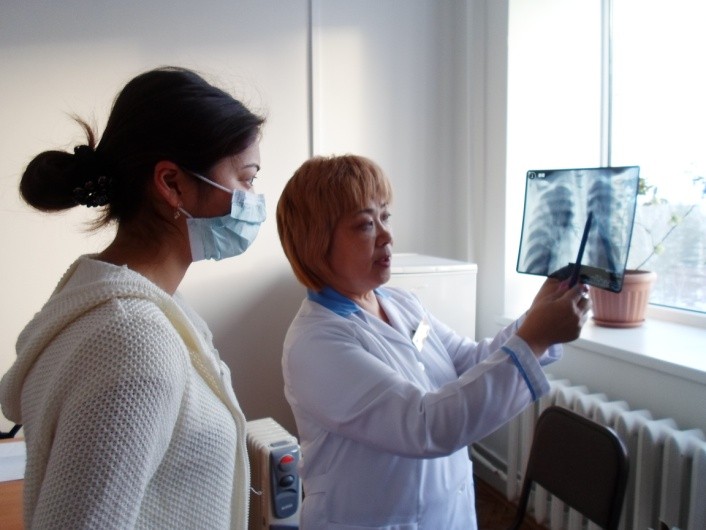
April 2014—Most tuberculosis (TB) patients in Kazakhstan, including non-infectious TB patients, are hospitalized from the time of their initial diagnosis to the end of the intensive phase of treatment. This ranges from two to four months for regular TB, and six to 12 months for multidrug-resistant TB (MDR-TB) cases. In addition to costing a significant portion of Kazakhstan’s national funding for TB, such lengthy hospitalizations do not comply with World Health Organization guidelines and other internationally accepted standards of care.
The hospitalizations also often result in negative social, psychological and emotional effects on persons with TB and their families while exposing them to the high risk of contracting other, deadlier strains of TB. The current treatment model unnecessarily takes TB patients out of the workforce for months, which often results in detrimental economic consequences for families and communities.
For the first time in Kazakh history, treatment was introduced for non-infectious patients in outpatient settings in May 2011. That’s when the USAID-funded TB CARE I project piloted full outpatient care for TB patients in the Akmola region of Kazakhstan. Using an approach recommended by the World Health Organization, the project introduced shorter hospitalization options, such as home-based care and services through clinics at TB hospitals, and psychosocial support. In addition to allowing patients the option to get better in the comfort of their own home, the approach reduced costs across the board for the TB program, families and communities.
Since the pilot program, the model has been expanded to regional health authorities and TB facilities. The project also established a training center at the Akmola regional TB dispensary to provide in-service training for TB professionals that allows them to effectively implement this new outpatient approach throughout the region.
With an endorsement from Kazakhstan’s National TB Program, the model has been gradually expanded through Akmola oblast. And the majority of TB and primary health-care facilities at regional, district and rural levels have adopted this model. The increased use of home-based care and the introduction of outpatient clinic services have worked well for persons with TB. Facilities report minimal treatment interruptions and not a single failure to follow up has been reported to date.
“Due to the opportunity to be an ambulatory patient, I came back to my family, studies and friends,” says Olzhas T.*, a 16-year-old college student.
His words were echoed by Natasha K., a young mother who contracted MDR-TB while caring for her 1-year-old baby: “Receiving care at the Kokshetau outpatient clinic was vital for me because I was not separated from my child.”
With USAID’s support, 32 percent of MDR-TB patients in Akmola oblast were enrolled in outpatient care in 2012, compared to only 10 percent in 2011. This shift has led to a reduction of 70 adult and 20 children’s beds in TB facilities in the region, with the resultant savings now funding more effective TB interventions. Provisional estimates indicate at least a three-fold decrease in the costs associated with outpatient care when compared to hospital-based care for both regular TB and MDR-TB patients.
In Kazakhstan, TB CARE I supports implementation of the national strategic plan for TB and plays a pivotal role in ensuring the development, strengthening and scale-up of programmatic management of drug-resistant TB in the civilian and penitentiary health systems. The project ends in September 2014.
*Full names withheld to protect privacy.
Links
Follow @USAIDCtrAsia, on Facebook, on Flickr, on YouTube







Comment
Make a general inquiry or suggest an improvement.